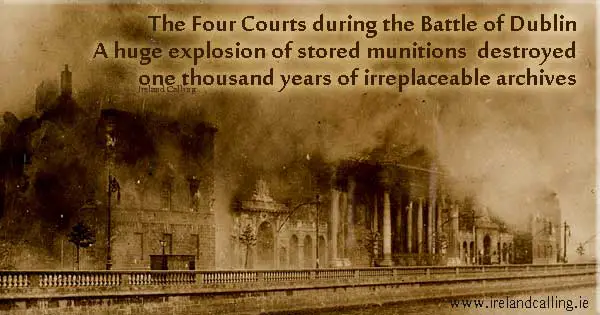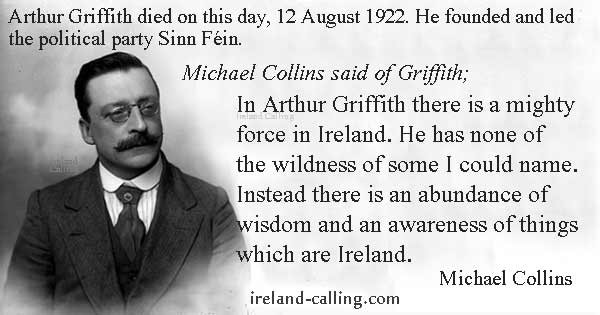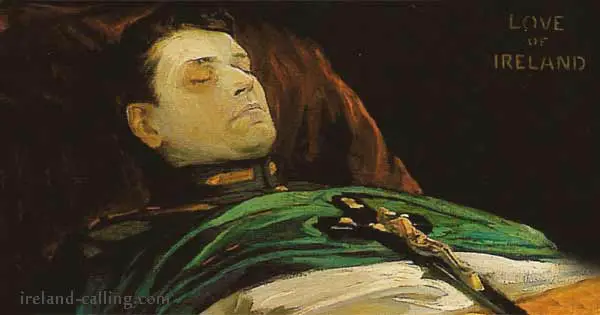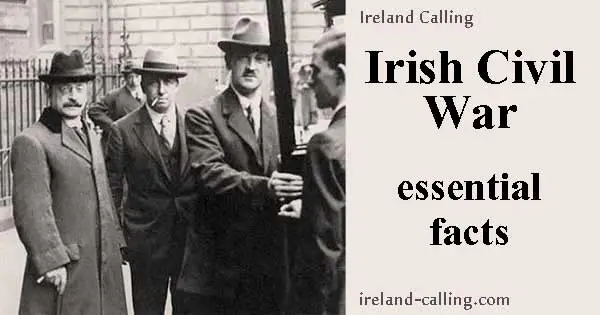The Irish Civil War took place from 28th June 1922 until 24th May 1923. It followed shortly after the end of the Irish War of Independence.
The IRA became split into two, with one half supporting the Anglo-Irish Treaty and setting up a government to run Ireland, and the other half opposed to the treaty, and taking paramilitary action against the new Free State government.
Essential facts about the Irish Civil War
- It was sparked by Michael Collins and Arthur Griffith signing the Anglo-Irish Treaty which gave Ireland independent status but as a dominion of the British Empire. Half the IRA rejected those terms and began a war with their former comrades.
***
- The seizure of the Four Courts is considered to be the event that officially started the War. Rory O’Connor led a troop of anti-treaty IRA volunteers to take control of the key buildings in Dublin. Michael Collins didn’t want to respond with force, but was left with no choice after one of his Free State Army soldiers was kidnapped.

***
- The Free State Army were able to drive the IRA into the south-west of Ireland with their superior weaponry and resources. The anti-treaty IRA responded by making the province of Munster their stronghold. They attacked the Free State Army in short guerrilla-style attacks to make the maximum impact.
***
- Arthur Griffith collapsed and died of suspected heart failure on 12th August 1922.

Ten days later Michael Collins was assassinated by anti-treaty fighters in his home county of Cork. Within the space of then days, the Free State government had lost its two most prominent leaders.

After Collins’ death, the Free State took a ruthless approach to any anti-treaty rebels. Kevin O’Higgins ordered the execution of 77 IRA prisoners, including Rory O’Connor who had been the best man at his wedding.
***
- The anti-treaty IRA responded to the executions by killing high profile figures associated with the Free State. Kevin O’Higgins’ father was assassinated and the family home was burnt to the ground. However, they had lost their way, and their resources and spirit were petering out.
***
- The leaders of the anti-treaty IRA held a meeting in Tipperary on 26th March 1923 to decide whether continuing to fight was futile. They decided to keep going after a narrow six to five vote. However, shortly after, Liam Lynch was killed and Dan Breen and Todd Andrews were arrested. Frank Aiken took over as commanding officer and ordered his troops to end the war.
***
- Thousands of anti-treaty fighters were arrested in the aftermath of the war. Éamon de Valera was one of those arrested and tried to rally the troops in prison by telling them that the country’s future lay in their hands. Some went on hunger strike but didn’t achieve any change on stance from the Free State. Most of the prisoners were released within a year of their arrest.
